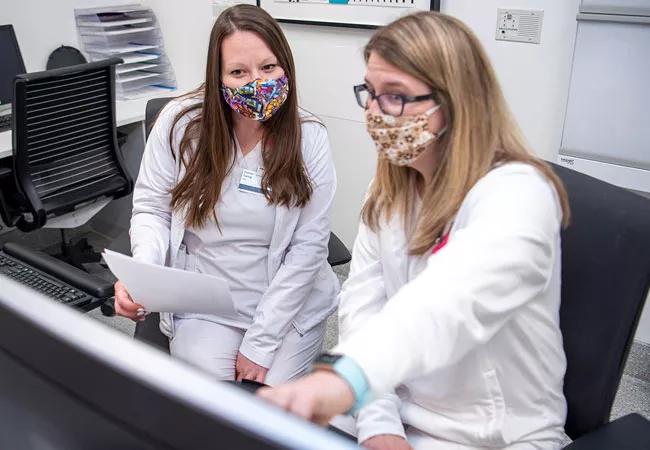Program provides consistency and efficiency

Clinical nurse orientation on the neurological ICU at Cleveland Clinic’s main campus is vital to ensure that high-acuity patients receive the best possible care. More than 80 nurses work on the 24-bed unit, which utilizes a 2-to-1 patient/nurse ratio. In the past six months alone, 22 new nurses have joined the neurological unit. All of these factors present challenges for orientation – particularly precepting. So the unit-based Shared Governance Council initiated a project in 2019 to standardize precepting.
Advertisement
Cleveland Clinic is a non-profit academic medical center. Advertising on our site helps support our mission. We do not endorse non-Cleveland Clinic products or services. Policy
“The idea behind the project was to make it safer for everybody involved and to help newer nurses be equipped with enough information to truly help them succeed,” says Amy Mahnke, BSN, RN, a clinical nurse on the unit and chair of the Shared Governance Council.
Previously, there was no standard process for selecting preceptors. Clinical nurses were usually asked by nurse managers to precept, often with little advance notice. In addition, there were no set prerequisites or required formal training to become a preceptor, and new nurses often worked alongside multiple preceptors during their 12-week orientation.
Lindsey Fascione, BSN, RN, a clinical nurse in the neurological ICU, approached Mahnke and the Shared Governance Council about spearheading a project to standardize precepting. The two nurses then held meetings on the unit with the nurse educator, clinical nurse specialist, nurse managers and clinical nurses to gather ideas on the most effective precepting process.
The unit implemented a standardized precepting process in mid-Spring 2019, which includes the following:
Advertisement
When the standardized program was put into place, 22 clinical nurses expressed an interest in becoming preceptors. By the end of 2019, 19 had completed training. In addition, nurses who served as preceptors prior to standardization of the program were also required to complete training. The neurological unit increased its number of trained preceptors by nearly 55%, with 86% of all preceptors having undergone formal training by the end of 2019.
“The RN orientation has been improved greatly by this process,” says Mahnke. “We are now able to match new hires with preceptors who are eager to participate and have the education and foundation to do it well.”
Advertisement
Advertisement

Real-time adjustments may help reduce bothersome dyskinesias

Anatomical modeling can identify optimal surgical candidates, study suggests

Add AI to the list of tools expected to advance care for pain patients

New guidelines from Brain Trauma Foundation urge early and aggressive treatment

Cleveland Clinic study investigated standard regimen

Despite the condition’s debilitating, electric shock-like pain, treatment options are better than ever

Innovative approach to the procedure can yield significant relief in complex cases

Cleveland Clinic researchers awarded $3.2 million for first-of-its-kind investigation